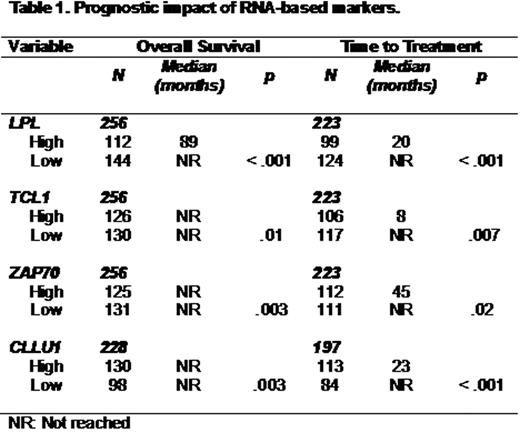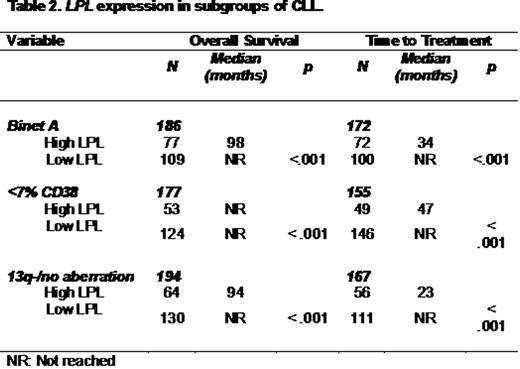Abstract
Poster Board I-276
Chronic lymphocytic leukemia (CLL) is a heterogeneous disease with varying clinical outcome, where many patients have an indolent course for many years, whereas others show a more aggressive disease despite treatment. This has prompted the search for biomarkers that can predict outcome in this disease. Recent studies have proposed the RNA expression levels of certain genes, i.e. LPL, CLLU1, TCL1, MCL1 and ZAP70 to be novel predictors of clinical outcome in CLL. However, a comprehensive assessment of these RNA-based markers is still lacking. The current study aimed to investigate the potential of these markers in CLL prognostication, either as single markers or in combination with established markers.
By applying real-time quantitative PCR, we measured the RNA expression levels of LPL, CLLU1, TCL1, MCL1 and ZAP70 in 256 newly diagnosed CLL samples from a Scandinavian population-based cohort collected from 1999 to 2002 (median follow-up, 89 months) and correlated with clinical outcome. The expression cut-offs for each RNA marker was determined by constructing ROC curves. Additionally, Binet stage, IGHV mutation status, CD38 expression (cut-off 7%) and the presence of recurrent genomic aberrations (i.e. 11q-, 17p-, 13q- and +12) were evaluated for all cases.
High expression of all RNA-based markers except MCL1 predicted significantly shorter overall survival (OS) and time to treatment (TTT), with LPL being the most significant prognostic marker in both log-rank (Table 1) and Cox univariate regression analyses. In multivariate analysis including the RNA markers, LPL expression was the only independent prognostic factor for OS, whereas both LPL and CLLU1 could predict TTT. When including all established markers, LPL lost its significance in the model, due to its close association to the IGHV mutation status. Once the mutation status was excluded from the analysis, LPL regained its prognostic power in addition to genomic aberrations and CD38. Interestingly, all of the RNA-based markers added further prognostic information to established markers in subgroups of patients, with LPL expression status giving the most significant results. Notably, high LPL expression predicted a worse outcome in favorable prognostic subgroups such as patients with Binet stage A, CD38 negativity or favorable genomic aberrations (Table 2).
Altogether, we conclude that LPL expression appear to be the strongest among the RNA-based markers for prediction of clinical outcome in CLL and thus could potentially be applied in the clinical laboratory to predict outcome, particularly in combination with established markers.
No relevant conflicts of interest to declare.

This icon denotes an abstract that is clinically relevant.
Author notes
Asterisk with author names denotes non-ASH members.



